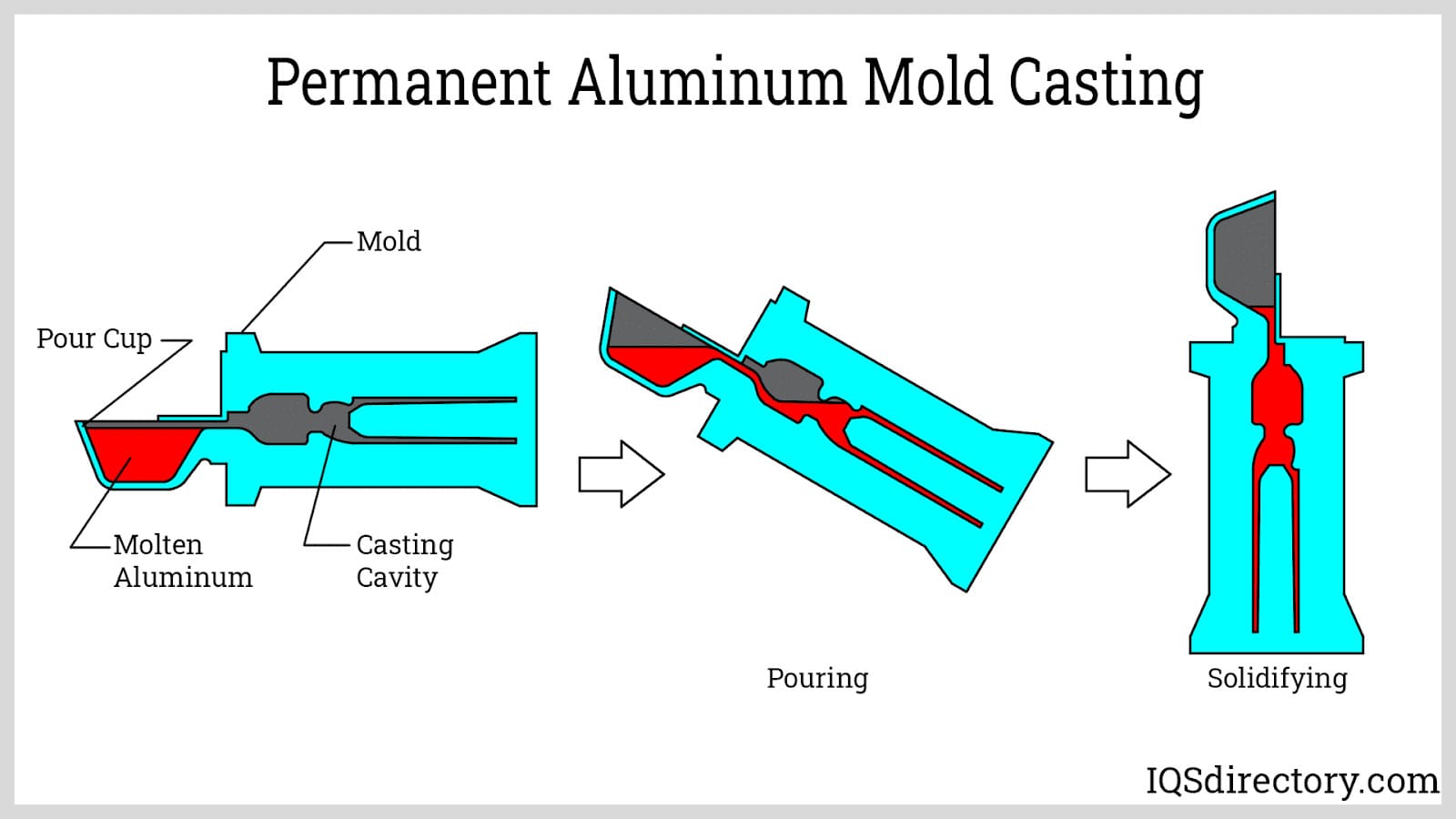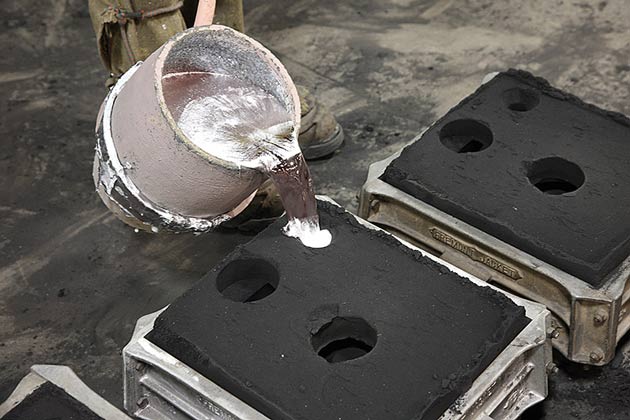Not known Facts About Stahl Specialty Company
Not known Facts About Stahl Specialty Company
Blog Article
Stahl Specialty Company for Beginners
Table of ContentsThe 8-Minute Rule for Stahl Specialty CompanyThe Ultimate Guide To Stahl Specialty CompanySome Known Factual Statements About Stahl Specialty Company All About Stahl Specialty CompanyThe smart Trick of Stahl Specialty Company That Nobody is Talking AboutGetting The Stahl Specialty Company To Work

If you're making a steel product, you've likely considered utilizing light weight aluminum as the base product. Pure light weight aluminum has actually limited applications, so it is usually incorporated with other aspects, such as silicon, magnesium, and manganese to create alloys.
(AA), based in North America, has produced specs that regulate light weight aluminum alloys' structure, residential or commercial properties, and language. There are two types of aluminum alloys wrought and cast.
The Only Guide to Stahl Specialty Company
Cast light weight aluminum alloys are made by thawing pure light weight aluminum and integrating it with various other steels while in fluid kind. Then the mix is put into a sand, pass away, or financial investment mold. After solidification, the steel is eliminated from its mold. At this phase, it remains in either its final form or as a billet or ingot for further handling.

The 4th figure, which comes after the decimal factor, defines if the alloy is a spreading (xxx. Wrought aluminum alloys also begin by combining molten aluminum with other steels. In comparison to cast alloys, however, they are formed right into their last shape with procedures such as extrusion, rolling, and flexing after the steel has actually solidified into billets or ingots.
There are many minor distinctions in between wrought and cast light weight aluminum alloys, such as that actors alloys can have extra considerable quantities of various other steels than wrought alloys. But one of the most notable distinction in between these alloys is the fabrication procedure whereby they will most likely to provide the end product. Besides some surface treatments, cast alloys will leave their mold and mildew in practically the precise solid form desired, whereas wrought alloys will certainly go through numerous modifications while in their solid state.
If you believe that a wrought alloy might be the most effective for your job, take an appearance at several of our articles that explain even more regarding certain functioned alloys, such as Alloy 6061 and Alloy 6063. On the various other hand, if you think a cast alloy would be much better for you, you can learn more concerning some cast alloys in our Alloy 380 and Alloy 383 articles (coming soon).
Stahl Specialty Company - The Facts
When choosing an aluminum factory for your manufacturing demands, it's important to research several elements. One of one of the most critical facets to think about is the experience and skills of the foundry. Casting Foundry. Selecting a shop who has the best understanding of the light weight aluminum spreading procedure, and the portfolio to reveal for it, assists to have a successful outcome for your job
Having the experience and industry understanding to engineer your castings for optimal manufacturing and high quality results will certainly improve the project. Producing aluminum spreading requires a complex set of procedures to attain the best results. When selecting a brand-new light weight aluminum foundry to companion with, ensure they have extensive market experience and are experienced regarding all aspects of the aluminum spreading procedure: layout, manufacturing, product evaluation, and item screening.
The foundry needs to also have a proven performance history of providing extraordinary items that satisfy or go beyond consumer assumptions. Quality assurance needs to likewise be at the top of your checklist when choosing a light weight aluminum foundry. By working with a qualified foundry that complies with the criteria for quality assurance, you can safeguard the integrity of your product and ensure it satisfies your requirements.
By choosing a business who uses solutions that satisfy or surpass your item requirements, you can be sure that your task will be finished with the utmost accuracy and effectiveness. Various parts need various manufacturing techniques to cast aluminum, such as sand casting or die casting.
The 4-Minute Rule for Stahl Specialty Company
Die casting is the name provided to the procedure of developing intricate metal elements with use mold and mildews of the element, likewise known as passes away. The process uses non-ferrous metals which do not have iron, such as aluminum, zinc and magnesium, because of the preferable residential properties of the metals such as low weight, higher conductivity, non-magnetic conductivity and resistance to rust.
Die casting manufacturing is quickly, making high manufacturing degrees of components simple. It creates even more elements than any type of other procedure, with a high level of precision and repeatability. To read more regarding die casting and pass away spreading materials made use of while doing so, continued reading. There are three sub-processes that drop under the category of die spreading: gravity die spreading (or irreversible mold casting), low-pressure die spreading and high-pressure die spreading.
After the purity of the alloy is checked, passes away are produced. To prepare the passes away for casting, it is vital that the dies are clean, so that no deposit from previous productions remain.
Some Ideas on Stahl Specialty Company You Should Know
The pure steel, also known as ingot, is contributed to the furnace and kept at the molten temperature of the steel, which is then transferred to the injection chamber and infused right into the die. The pressure is then preserved as the metal solidifies. As soon as the steel solidifies, the cooling process starts.
(https://leetcode.com/u/stahlspecialc/)
The thicker the wall of the part, the longer the cooling time since of the amount of interior find more info metal that additionally needs to cool. After the part is totally cooled down, the die cuts in half open and an ejection device presses the part out. Complying with the ejection, the die is shut for the next injection cycle.
The flash is the extra product that is cast throughout the process. This should be trimmed off utilizing a trim device to leave simply the primary component. Deburring eliminates the smaller pieces, called burrs, after the trimming process. The part is polished, or burnished, to provide it a smooth finish.
Stahl Specialty Company - Truths

Zinc is among the most secondhand alloys for die spreading because of its reduced expense of resources. It's additionally among the more powerful and steady steels. Plus, it has excellent electrical and thermal conductivity. Its deterioration resistance additionally allows the components to be lengthy lasting, and it is just one of the extra castable alloys as a result of its lower melting factor - aluminum foundry.
As mentioned, this alloy is among one of the most typically made use of, yet manufactures will, at times, pick light weight aluminum over zinc because of light weight aluminum's manufacturing advantages. Light weight aluminum is very affordable and one of the much more versatile alloys. Light weight aluminum is made use of for a number of various items and industries anything from window structures to aerospace materials.
Report this page